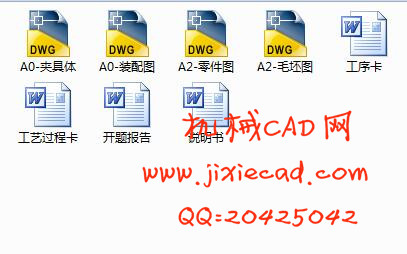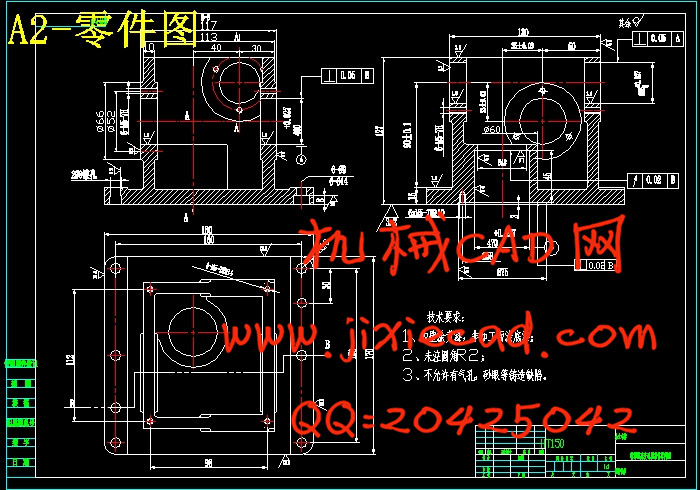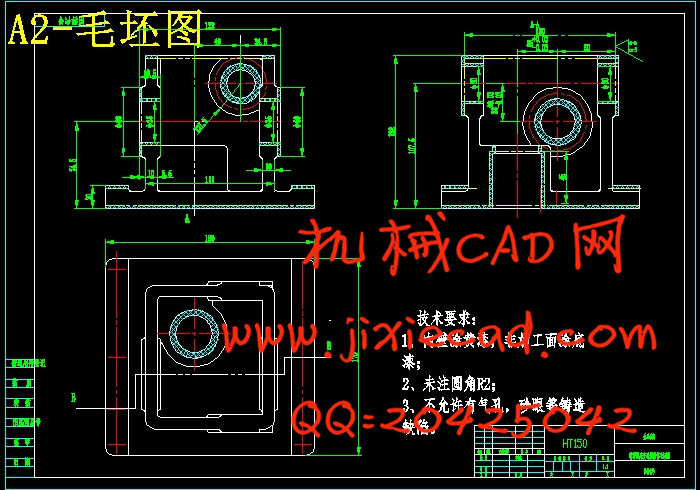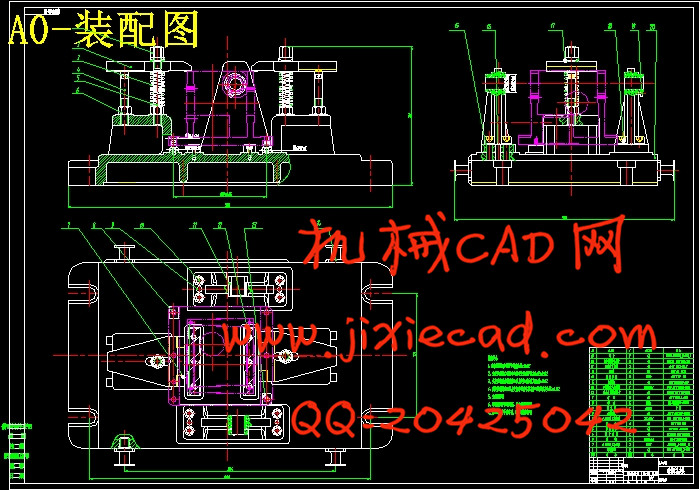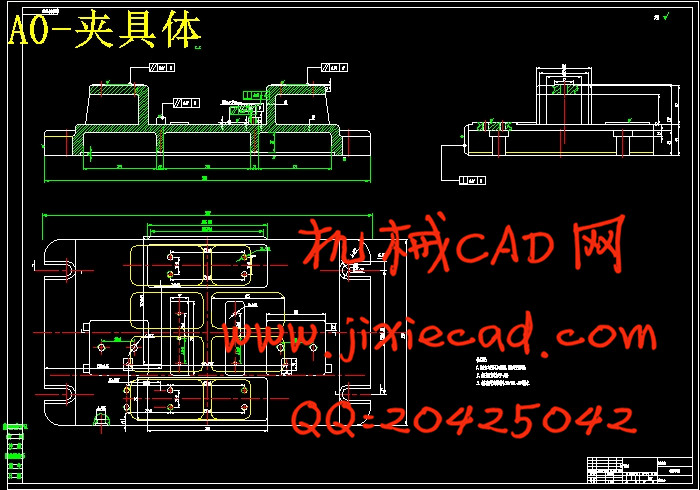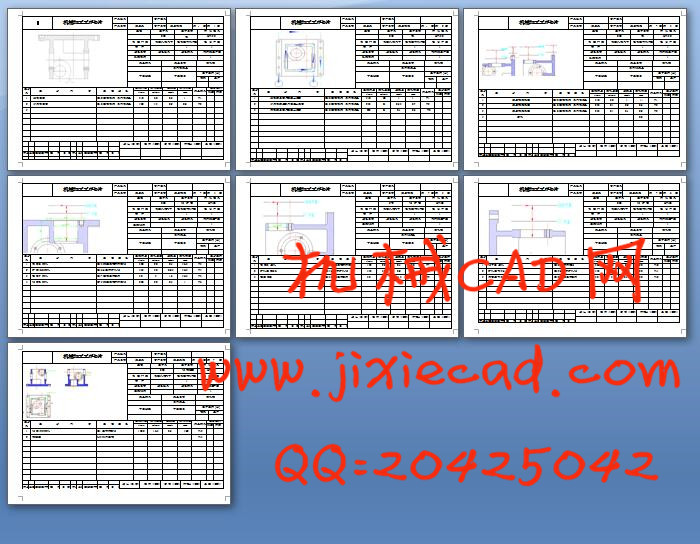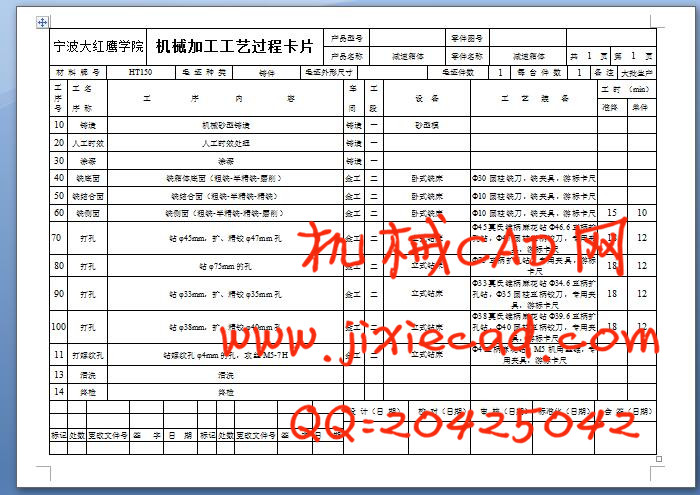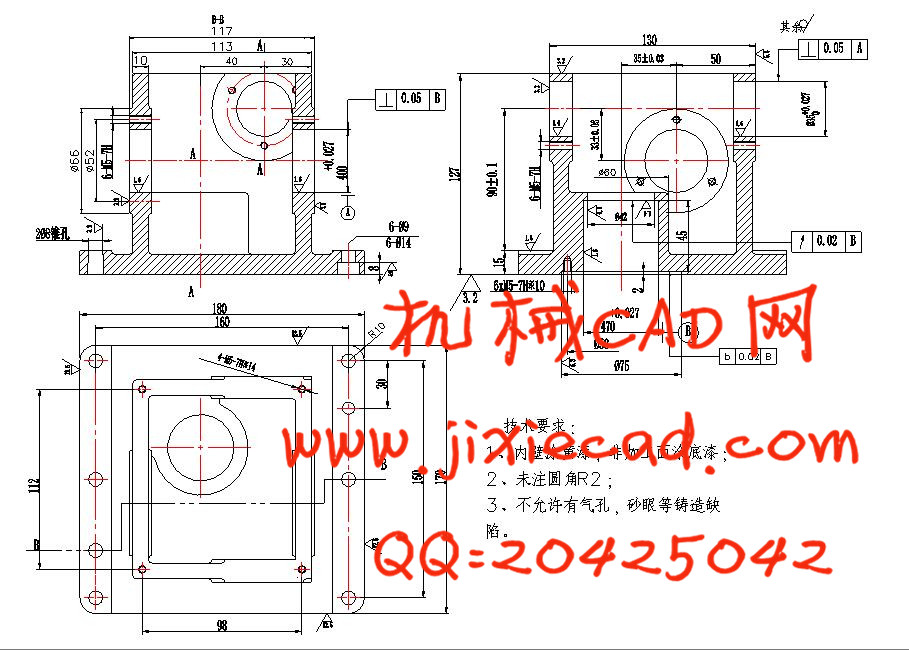设计简介
摘 要
本文是在B箱体的图样分析后进行B箱体的机械加工工艺路线的设计,同时按照其中的加工工序的要求设计夹具。B箱体的主要加工内容是表面和孔。其加工路线长,加工时间多,加工成本高,零件的加工精度要求也高。按照机械加工工艺要求,遵循先面后孔的原则,并将孔与平面的加工明确划分成粗加工和精加工阶段以保证加工精度。基准选择以底面作为粗基准,以底面与两个工艺孔作为精基准,确定了其加工的工艺路线和加工中所需要的各种工艺参数。
在零件的夹具设计中,主要是根据零件加工工序要求,分析应限的自由度数,进而根据零件的表面特征选定定位元件,再分析所选定位元件能否限定应限自由度。确定了定位元件后还需要选择夹紧元件,最后就是确定专用夹具的结构形式。
关键词:B箱体;加工工艺;工序;专用夹具
Abstract
This article is in the design analysis conducted B Case B Case machining process route design, while according to the requirements of the design process in which the processing jig.The main content of the processing tank B is a surface and the hole. Its processing line long processing times and more, high processing costs, machining precision parts is high. In accordance with the requirements of the machining process, follow the principle of surface after the first hole, and hole machining and the plane clearly divided into roughing and finishing stages in order to ensure accuracy. Select to the bottom surface of the base as a crude reference to the bottom surface of the hole as a fine reference both processes, determine the route of its processing technology and the various process parameters required for processing.
In fixture design parts, the main part is based on the requirements of the processing step, the analysis should be limited to the number of degrees of freedom, and then depending on the surface characteristics of the part of the positioning element is selected, and then analyze whether the selected positioning element defines should limit freedom. Determine the positioning element after clamping elements also need to choose, it is to determine the final form of the structure of the special fixture.
Keywords: B box; processing; step; special fixture
目 录
摘 要··········································································································· IIAbstract········································································································· III
目 录·········································································································· IV
第1章 绪论···································································································· 1
1.1 本课题的研究内容和意义··································································· 1
1.2 国内外的发展概况············································································· 2
1.3 本课题应达到的要求·········································································· 3
第2章 加工工艺规程设计················································································· 4
2.1 零件的分析······················································································ 4
2.1.1 零件的作用················································································· 4
2.1.2 零件的工艺分析·········································································· 4
2.2 B箱体加工的主要问题和工艺过程设计所应采取的相应措施·················· 4
2.2.1 孔和平面的加工顺序···································································· 4
2.2.2 孔系加工方案选择······································································· 5
2.3 B箱体加工定位基准的选择································································· 5
2.3.1 粗基准的选择·············································································· 5
2.3.2 精基准的选择·············································································· 6
2.4 拟定工艺过程的原则·········································································· 6
2.5 加工顺序的安排················································································ 8
2.5.1机械加工顺序的安排····································································· 8
2.5.2热处理工序的安排········································································ 8
2.6 工艺路线·························································································· 8
2.7 合理安排辅助工序············································································· 9
2.8 计算工序尺寸及公差·········································································· 9
2.8.1确定加工余量·············································································· 9
2.8.2确定各工序切削用量··································································· 10
第3章 镗孔夹具设计······················································································ 18
3.1 研究原始质料·················································································· 18
3.2 定位、夹紧方案的选择····································································· 18
3.3切削力及夹紧力的计算······································································ 18
3.4 误差分析与计算·············································································· 20
3.5夹紧装置的选用··············································································· 21
3.6 夹具设计及操作的简要说明······························································ 21
第4章 铣侧面夹具设计·················································································· 22
4.1 指出存在的问题·············································································· 22
4.2 夹具设计························································································ 22
4.2.1夹具体设计················································································ 22
4.2.2 定位基准的选择········································································· 22
4.2.3 定位方案和元件设计·································································· 22
4.2.4 定位误差的计算········································································· 23
4.2.5 夹紧力计算··············································································· 24
4.2.6 夹紧机构的设计········································································· 25
4.2.7 定向键与对刀装置设计······························································· 26
4.2.8确定夹具体结构尺寸和总体结构··················································· 27
4.2.9 夹具设计及操作的简要说明························································· 29
第5章 结论与展望························································································· 30
5.1结论······························································································· 30
5.2不足之处及未来展望········································································· 30
致谢·············································································································· 31
参考文献······································································································· 32


